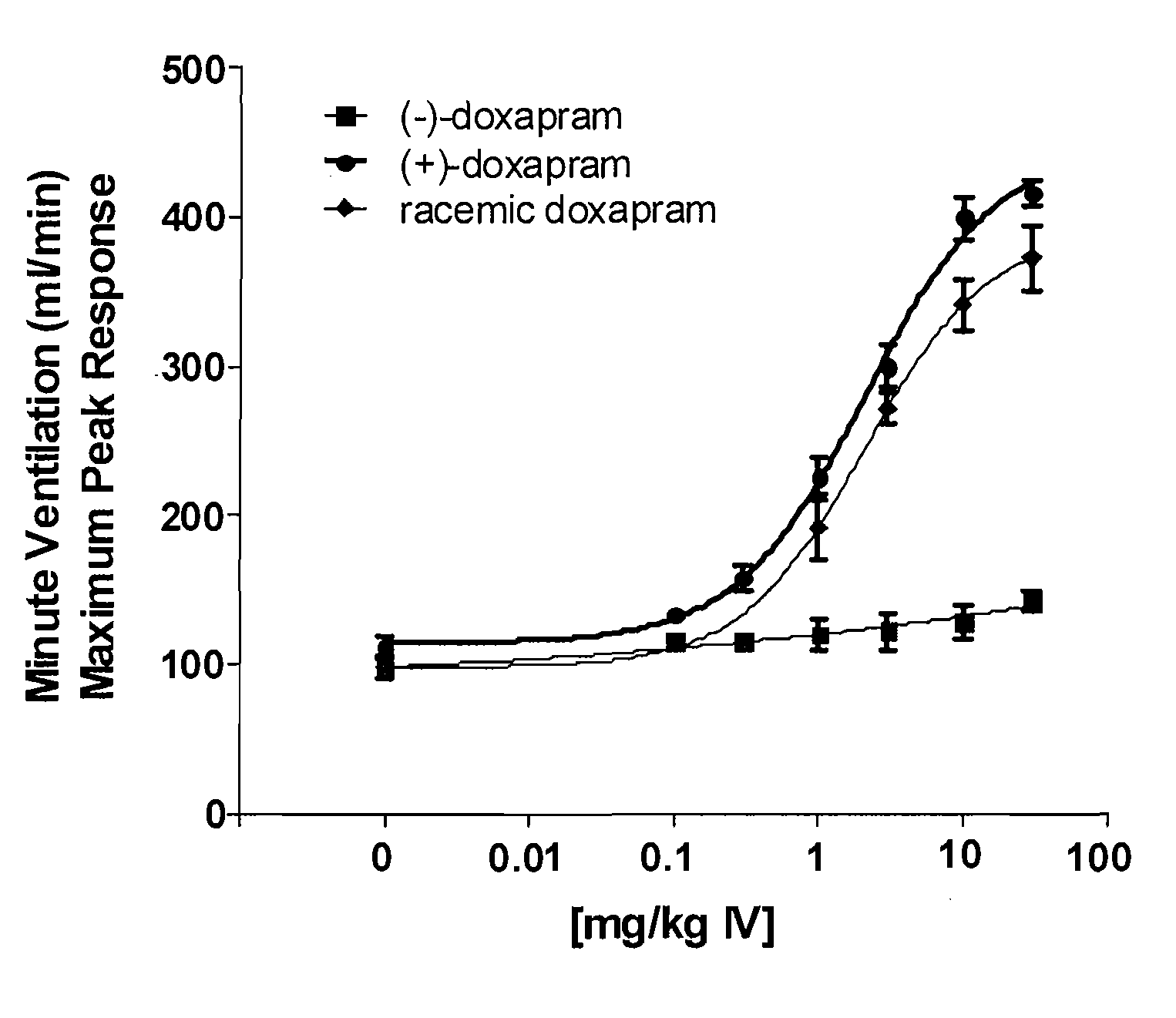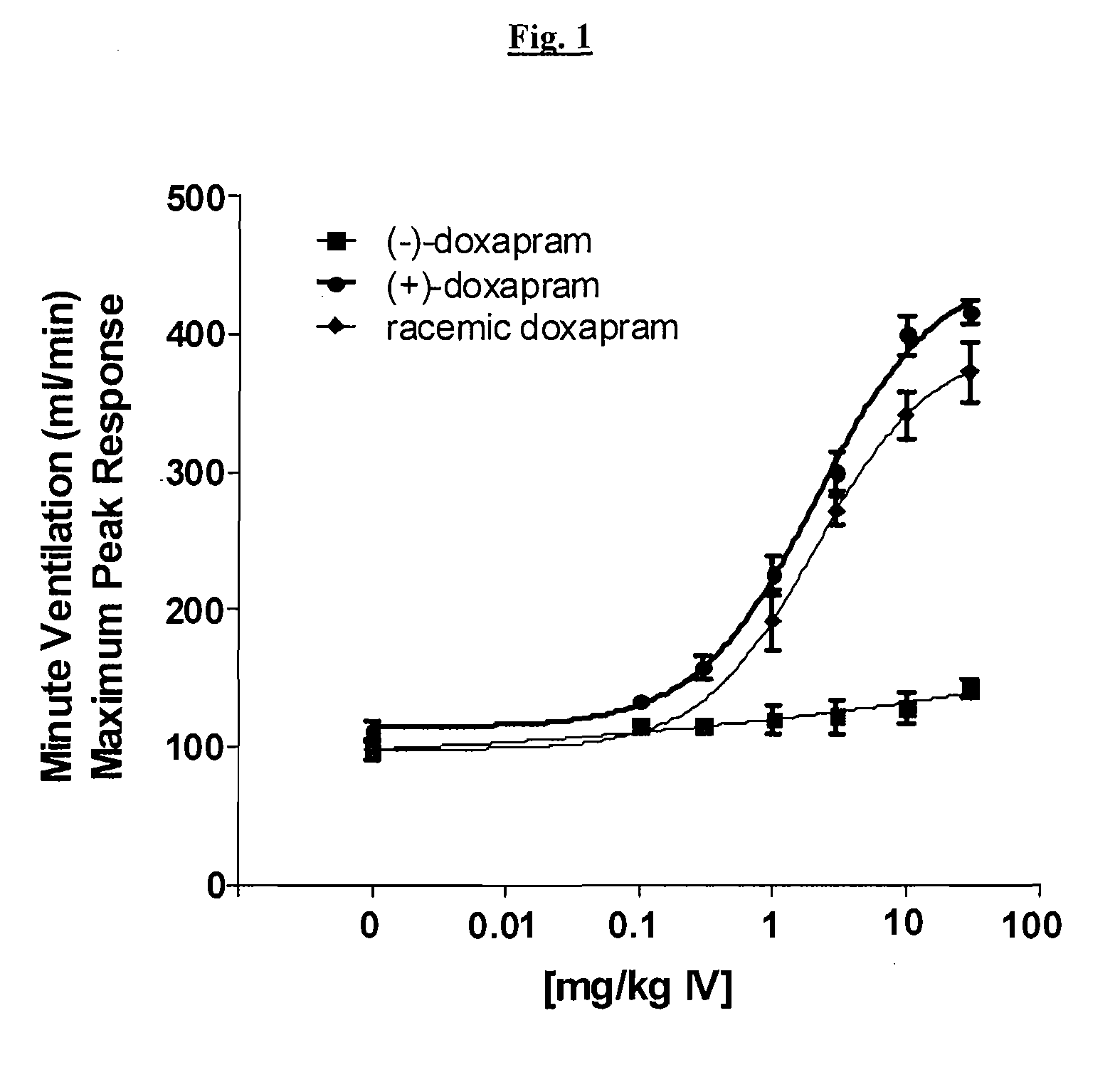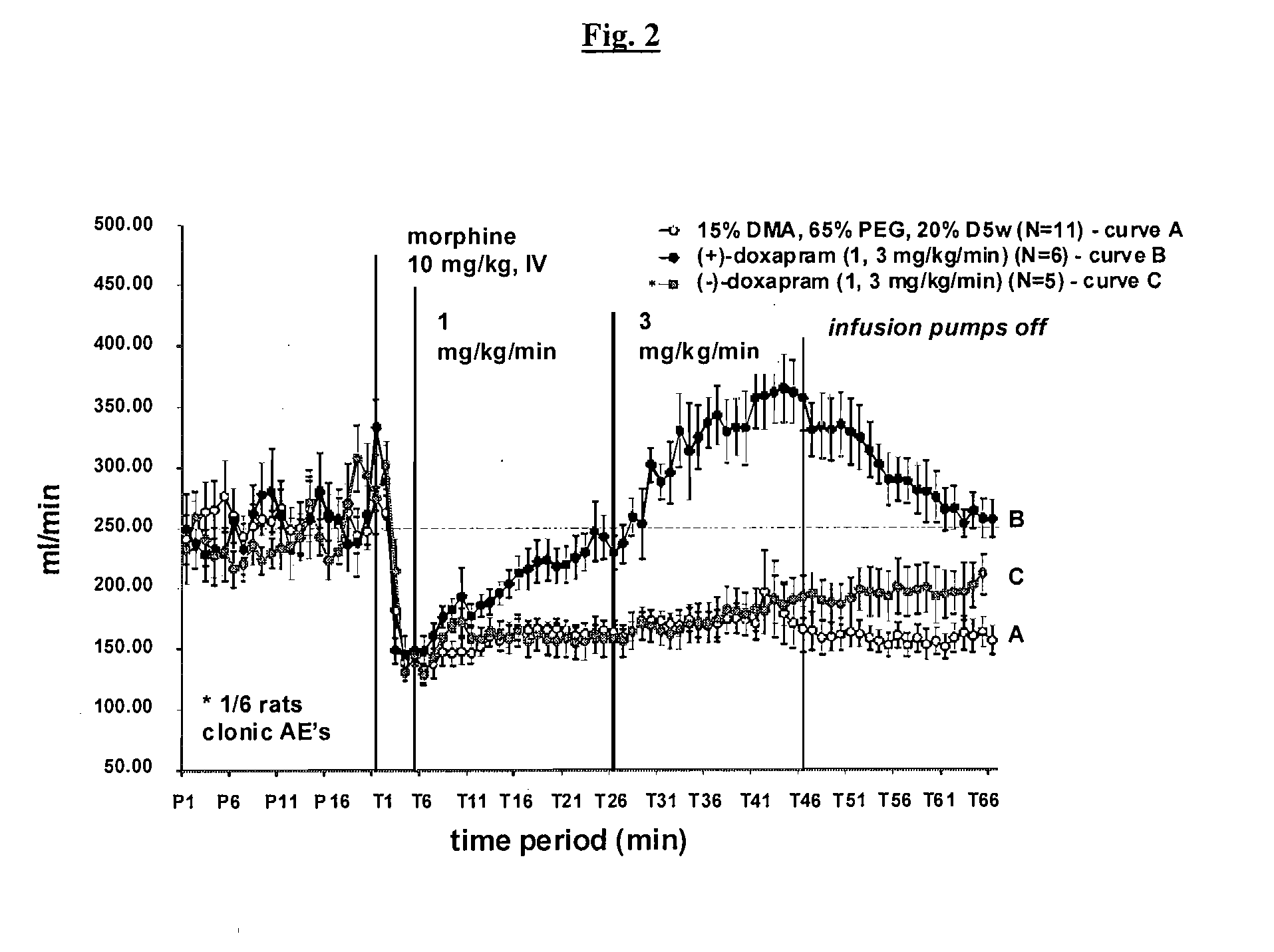Novel Method For Treating Breathing Disorders or Diseases
a breathing disorder and a new type of technology, applied in the field of breathing disorders or diseases, can solve the problems of severe cardiovascular consequences, hypoxia (and the associated oxidative stress), no breathing, etc., and achieve the effects of preventing destabilizing or stabilizing breathing rhythm, and preventing or treating a breathing disorder or diseas
- Summary
- Abstract
- Description
- Claims
- Application Information
AI Technical Summary
Benefits of technology
Problems solved by technology
Method used
Image
Examples
example 1
Effect of (+)-Doxapram and (−)-Doxapram in Ventilation Parameters in the Rat, as Determined by In Vivo Spirometry
[0151]All surgical procedures were performed under anesthesia induced by 2% isoflurane in compressed medical grade air. With rats in supine position, the right femoral vein was catheterized using polyethylene tubing (PE-50). This catheter was used for fluid and drug administration. Simultaneously, the right femoral artery was also catheterized for monitoring blood pressure. In order to measure the respiratory parameters in spontaneously breathing rats, trachea was intubated using 13 gauge tracheal tube (2.5 mm ID, Instech Solomon, Pa.).
[0152]After establishing a stable base-line at 1.5% isoflurane, cumulative dose-dependent (1, 3, 10 and 30 mg / kg) ventilatory responses to (−)-doxapram, (+)-doxapram, or racemic doxapram were generated from spontaneously breathing rats. Maximum peak minute ventilatory (MV) values at each dose from corresponding drug were calculated and used...
example 2
Effect of (+)-Doxapram and (−)-Doxapram on Opioid-Induced Respiratory Depression in the Rat, as Determined by Plethysmography
[0153]All animal experiments were carried out according to the US law on animals care and use approved by Galleon Pharmaceuticals Institutional Animal Care and Use Committee (IACUC). Rats with pre-cannulated jugular vein (for administrating drugs) were acclimated to plethysmography chambers for a minimum of 60 minutes, or until animals were no longer restless. Each animal was dosed with morphine sulfate (10 mg / kg), dissolved in sterile water at a concentration of 10 mg / mL (supplied by Baxter Healthcare Corporation), via injection into the jugular vein catheter over a period of 5-10 seconds. After a period of 5 min, (−)-doxapram, (+)-doxapram, or racemic doxapram (1 mg / mL) was administered via infusion into the jugular vein at a rate of 0.020 mL / min for a 300 gram rat. Behavioral observations were made though the course of the experiment. After 20 min of infusi...
example 3
Effect of (+)-Doxapram and (−)-Doxapram on Opioid-Induced Changes in Arterial Blood Gas Parameters in the Rat, as Determined by Arterial Blood Gas Analysis
[0154]Rats with pre-cannulated jugular vein and femoral arterial catheters (for administrating drugs and obtaining blood samples respectively) were obtained from Harlan laboratories and kept at the animal facility at Galleon Pharmaceuticals until the experimental procedures. All animals experiments were carried out according to the US law on animals care and use approved by Galleon Pharmaceuticals IACUC. Each animal was dosed with morphine sulfate (10 mg / kg), dissolved in saline at a concentration of 10 mg / ml, via injection into the jugular vein over a period of 20 seconds with a 20 second flush of 0.9% NaCl saline. Prior to morphine administration, two 250 μL samples of arterial blood were aspirated from the femoral artery into a pre-heparinized syringe. The samples were analyzed on Radiometer's ABL Flex 800, where pO2, pCO2, pH,...
PUM
| Property | Measurement | Unit |
|---|---|---|
| length | aaaaa | aaaaa |
| temperature | aaaaa | aaaaa |
| internal diameter×25 | aaaaa | aaaaa |
Abstract
Description
Claims
Application Information
 Login to View More
Login to View More - R&D
- Intellectual Property
- Life Sciences
- Materials
- Tech Scout
- Unparalleled Data Quality
- Higher Quality Content
- 60% Fewer Hallucinations
Browse by: Latest US Patents, China's latest patents, Technical Efficacy Thesaurus, Application Domain, Technology Topic, Popular Technical Reports.
© 2025 PatSnap. All rights reserved.Legal|Privacy policy|Modern Slavery Act Transparency Statement|Sitemap|About US| Contact US: help@patsnap.com



